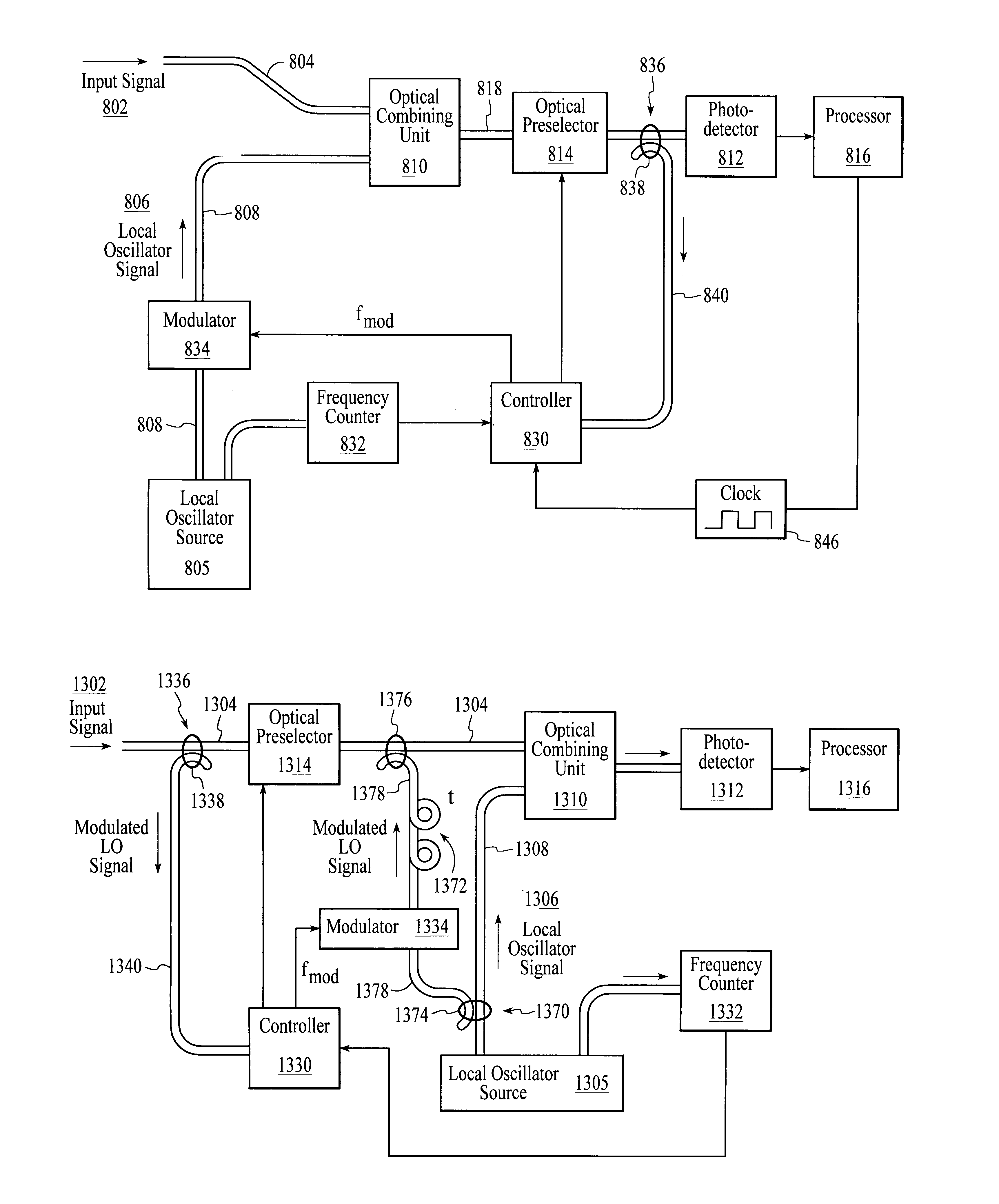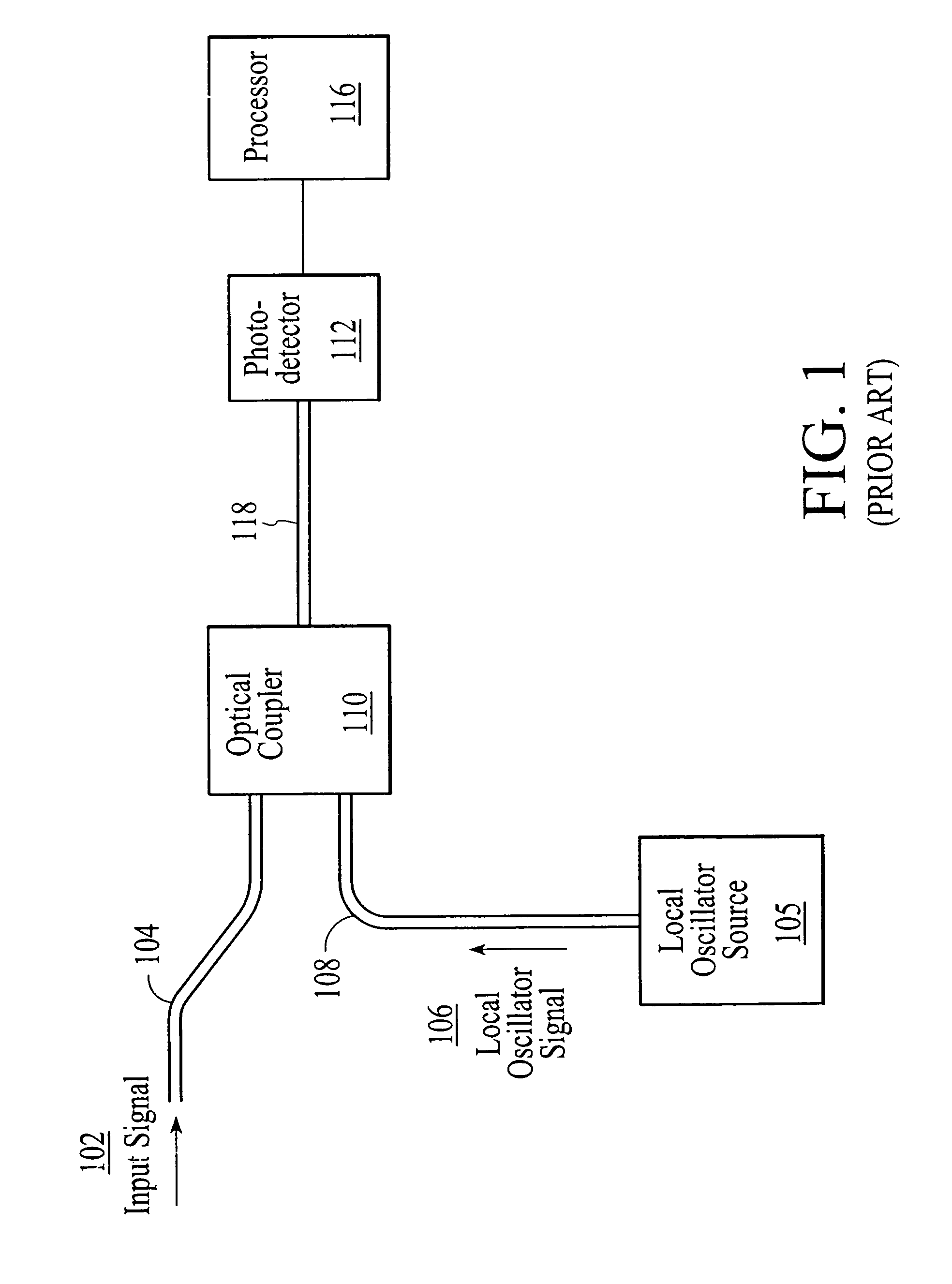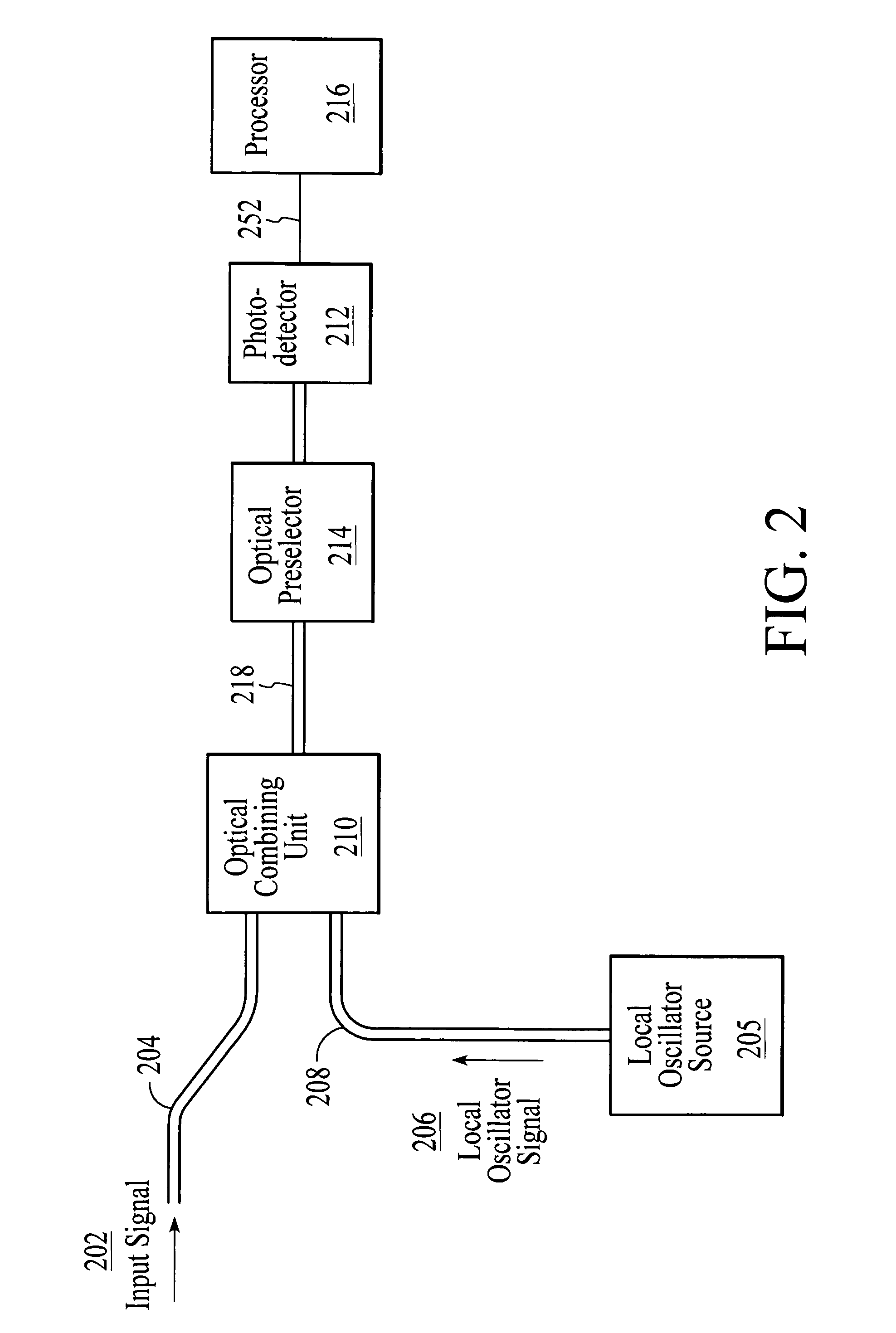System and method for optical heterodyne detection of an optical signal including optical pre-selection that is adjusted to accurately track a local oscillator signal
a detection system and optical signal technology, applied in the field of optical heterodyne detection of optical signals, can solve the problems of limiting the resolution that can be obtained, reducing the signal-to-noise ratio of heterodyne signals, and increasing the intensity noise of input signals amplification also achieves the effect of reducing noise and increasing the dynamic range of optical heterodyne detection systems
- Summary
- Abstract
- Description
- Claims
- Application Information
AI Technical Summary
Benefits of technology
Problems solved by technology
Method used
Image
Examples
Embodiment Construction
[0039]A method and system for ensuring that the tunable optical pre-selector accurately tracks the frequency of the swept local oscillator signal involves adjusting the optical pre-selector in response to a measure of the frequency of the swept local oscillator signal and in response to a measure of a portion of the swept local oscillator signal after the portion of the swept local oscillator signal has optically interacted with the optical pre-selector. In an embodiment, at least some portion of the swept local oscillator signal is modulated before it interacts with the optical pre-selector. In another embodiment, the optical pre-selector is dithered such that a dither is imparted on the portion of the swept local oscillator signal that interacts with the optical pre-selector. Both embodiments of the optical heterodyne detection system enable the generation of an error signal that represents the offset between the center frequency of the optical pre-selector and the frequency of th...
PUM
| Property | Measurement | Unit |
|---|---|---|
| modulation frequency | aaaaa | aaaaa |
| drive voltage | aaaaa | aaaaa |
| drive voltage | aaaaa | aaaaa |
Abstract
Description
Claims
Application Information
 Login to View More
Login to View More - R&D
- Intellectual Property
- Life Sciences
- Materials
- Tech Scout
- Unparalleled Data Quality
- Higher Quality Content
- 60% Fewer Hallucinations
Browse by: Latest US Patents, China's latest patents, Technical Efficacy Thesaurus, Application Domain, Technology Topic, Popular Technical Reports.
© 2025 PatSnap. All rights reserved.Legal|Privacy policy|Modern Slavery Act Transparency Statement|Sitemap|About US| Contact US: help@patsnap.com



